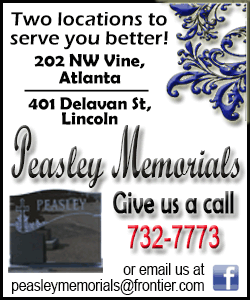|
 The Federal Aviation Administration, by the end of the month, is
expected to propose new rules governing small unmanned aircraft
systems, the first major overhaul of its drone policy. The Federal Aviation Administration, by the end of the month, is
expected to propose new rules governing small unmanned aircraft
systems, the first major overhaul of its drone policy.
The agency is closely guarding details, saying only that the rules
will cover a wide range of users flying aircraft or drones weighing
55 pounds or less.
But legal and policy experts who have advised the FAA and lobbied on
drone regulations said they predict the new regulations will include
restrictions on hundreds of thousands of people who fly quad-copters
or toy planes in parks or backyards.
The focus on toy aircraft is a new twist. Such regulations have been
in the works for years, largely because of pressure from businesses
wanting to use drones for tasks such as aerial photography.
Experts said that based on existing drone guidelines, the new FAA
rules, expected to take at least a year to kick in, will likely
require, among other things, recreational fliers to either join a
community-based model aircraft organization - or obtain
authorization from the FAA. The rules also could place other
restrictions on people who fly drones recklessly, the experts said.
If the rules omit discussion of recreational fliers, the experts
added, that could sow confusion on what type of flying is allowed.
 "There's basically going to be two options," said Richard Hanson,
director of government affairs at the Academy of Model Aeronautics,
who has lobbied Congress and advised the FAA on drone regulations.
"You either participate in a community-based organization or you
have to follow the rules as if you are commercial operator."
RISKY FLIERS
Bona-fide hobbyists have gotten little attention, largely because
Congress in 2012 exempted them from new FAA rules - provided they
adhere to, among other things, the safety code of a community-based
organization, such as AMA, which has more than 170,000 members.
But that carve-out doesn't apply to an estimated 300,000 people in
the U.S. who have bought toy aircraft and are largely unaware of
hobbyist association safety codes.
These casual fliers, including people who get a toy drone as a
holiday gift, are blamed for dangerous flights near airports,
stadiums and military bases. The FAA recently documented more than
190 close calls, including instances of drones flying within 50 feet
of jetliners landing in New York and elsewhere.
"Unfortunately, there are lots of people who've bought these things
at the local store or online who don't know anything about the AMA
or its safety guidelines," said Ted Ellett, a former FAA chief
counsel and head of the unmanned aircraft systems group at law firm
Hogan Lovells in Washington, D.C.
In the absence of rules, the FAA has largely relied on local and
state police to prosecute risky drone fliers.
[to top of second column] |

GOING SOFT?
Experts say it makes little sense for the FAA to be softer on
hobbyists than on commercial fliers, who have an interest in flying
responsibly to avoid lawsuits and protect their brands.
"Drone technology is far surpassing the flying skills of the people
who have them," said Paul Fraidenburgh, an aviation lawyer at
Buchalter Nemer in Irvine, California. "The fact that someone is
receiving money makes me feel safer about their operation."
Ellett, the former FAA chief counsel, said the FAA should issue
clear definitions for flights that are exempt from the new rules -
and those that are not. Otherwise, he added, confusion will be the
order of the day.
The AMA has lobbied for the hobbyist exemption, arguing its members
have an 80-year history of safe piloting, even with planes that are
fitted with jet engines and can zoom at 200 miles an hour, the AMA's
Hanson said. Those enthusiasts are not the toy-flying amateurs who
order a quad-copter from Amazon.com Inc that experts expect the
FAA's new rule to address.
Hanson served on an FAA advisory group that recommended light
regulation for drones weighing a pound or two but would ratchet up
requirements for flying aircraft of greater size and power. He said
his understanding of current FAA policy suggests the agency won't
provide that kind of stepped regulation.
The AMA's safety code covers items the FAA has said should apply to
hobbyists: not flying carelessly or recklessly, avoiding prohibited
areas, staying below 400 feet, keeping clear of manned aircraft and
not "flying directly over unprotected people." The AMA's $58 annual
membership fee includes $2.5 million in liability insurance.

The FAA said at a congressional hearing on Wednesday it is trying to
educate recreational fliers about safe flight, recognizing that
final rules are at least a year away. In the same vein, Amazon has
linked its online "drone store" to the AMA, the FAA and other sites
with safety information.
(Reporting by Alwyn Scott, editing by Hank Gilman)
[© 2014 Thomson Reuters. All rights
reserved.] Copyright 2014 Reuters. All rights reserved. This material may not be published,
broadcast, rewritten or redistributed. |